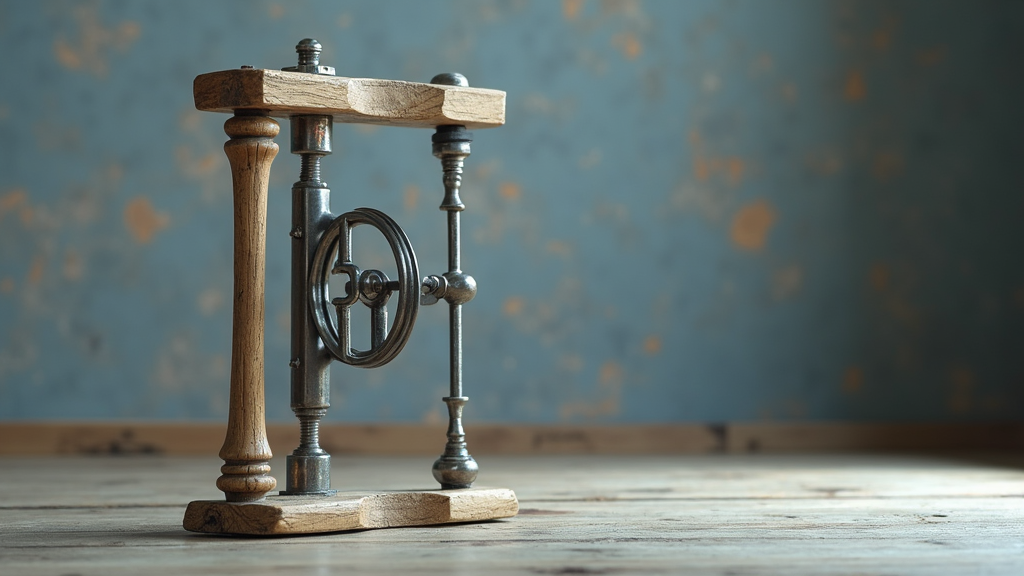Table of Contents
- Introduction
- Understanding the Basics
- Detailed Guide
- Serving Strategies
- Power Generation and Body Mechanics
- Mental Game
- Drills for Improvement
- Learning from the Pros
- Conclusion
Introduction

Overview and Importance
In pickleball, the serve is more than just the start of a rally; it’s a crucial element that significantly influences the ease of return and, ultimately, your scoring potential. Remember, in pickleball, only the serving side can score, making each serve a valuable opportunity to gain an advantage. Consistent and well-placed serves can dramatically increase your win percentage. In fact, statistics show that players with consistent serves see an increase in win percentage by up to 30%. A strong serve puts immediate pressure on your opponent, forcing them into defensive positions and setting you up for a successful rally.
Background
The history of pickleball serves is a story of evolution. In the early days of the sport, the focus was primarily on getting the ball in play with simple, straightforward serves. Over time, as the game grew in popularity and players became more skilled, serving strategies began to evolve. Recent developments in pickleball have seen the introduction of spin serves, where players impart topspin or sidespin on the ball to make it more difficult for the receiving team to handle. Advanced placement strategies have also emerged, with players carefully aiming their serves to exploit weaknesses in their opponents’ positioning or court coverage. These advancements have transformed the serve from a mere formality into a strategic weapon.
What You’ll Learn
In this guide, you’ll learn the core concepts of effective serving in pickleball. We’ll cover the fundamental underhand serve mechanics, ensuring you have a solid foundation. We’ll also delve into placement strategies, teaching you how to target specific areas of the court to maximize your advantage. Finally, we’ll explore spin techniques, showing you how to add topspin, backspin, and sidespin to your serves to make them more challenging for your opponents to return. You’ll gain practical knowledge on how to execute various serves with precision, adapt your serving strategy based on your opponents’ strengths and weaknesses, and improve your overall serving consistency. By the end of this guide, you’ll have the tools and knowledge necessary to turn your serve into a powerful weapon on the pickleball court.
Understanding the Basics
Fundamental Concepts
Before diving into the intricacies of pickleball serving, it’s essential to grasp the fundamental concepts that underpin a successful serve. At its core, the serve is your opening statement, the first opportunity to dictate the flow of the rally. Understanding the key definitions and core principles will set a solid foundation for mastering this critical skill.
Let’s start with some key definitions:
- Underhand serve:This refers to the way you strike the ball. In pickleball, the paddle contact must be made below your wrist and navel. This distinguishes it from other racquet sports where overhand serves are common.
- Diagonal serve:This specifies where your serve needs to land. Your serve must land in the service court diagonally opposite to you. This cross-court requirement adds a strategic element to serve placement.
Beyond these definitions, keep in mind the core principles that should guide your serving strategy:
- Consistency:A consistent serve is paramount. Aim to reliably get the ball in play, putting pressure on your opponent to return it. Consistency minimizes unforced errors and allows you to build a rally.
- Placement:Don’t just aim to get the ball in; aim to place it strategically. Target your opponent’s weaknesses, exploit court positioning, and make it difficult for them to launch an aggressive return.
- Deception:As you progress, incorporate deception into your serve. Vary your spin, speed, and angle to keep your opponent guessing. A deceptive serve can disrupt their timing and lead to weaker returns.
Essential Components
Now that we’ve covered the fundamental concepts, let’s break down the essential components that make up a legal and effective pickleball serve. These components can be categorized into required elements and key features, each playing a crucial role in your serving prowess.
First, let’s look at the required elements:
- Legal serve:Remember, a legal serve in pickleball must adhere to specific rules. It must be underhand, with paddle contact below the waist. The serve must also be diagonal, landing within the boundaries of the opposite service court.
- Proper foot placement:Your foot placement is another crucial aspect of a legal serve. Both feet must be behind the baseline when you strike the ball. You cannot step over the baseline until after the ball is hit.
Next, consider these key features to improve your serve:
- Primary aspects:
- Secondary aspects:
- Grip:Your grip affects your control and power. Experiment with different grips to find one that feels comfortable and allows you to generate spin.
- Stance:A balanced stance provides stability and allows you to transfer your weight effectively.
- Toss:A consistent toss is essential for a reliable serve. Practice tossing the ball in the same spot every time.
- Contact point:The point at which you make contact with the ball influences its trajectory and spin.
- Follow-through:A smooth follow-through ensures that you transfer your energy efficiently and maintain control.
- Spin:Adding spin to your serve can make it more difficult to return. Topspin and slice are two common types of spin serves.
- Speed:Varying the speed of your serve can disrupt your opponent’s timing.
- Angle:Adjusting the angle of your serve can force your opponent to move and open up the court.
Finally, explore these important variations:
- Important variations:
- Deep serve:A deep serve lands near the baseline, pushing your opponent back.
- Short serve:A short serve lands closer to the non-volley zone line, forcing your opponent to move forward.
- Topspin serve:A topspin serve dips quickly and bounces forward, making it difficult to attack.
- Slice serve:A slice serve curves to the side and bounces low, forcing your opponent to reach.
Detailed Guide

Preparation
Before you step onto the pickleball court to serve, meticulous preparation is key. This involves gathering the right equipment, understanding the initial setup, and considering external factors that could influence your serve.
- Required materials:
- Pickleball paddle: Opt for a paddle weighing between 8 and 8.5 ounces for a good balance of power and control.
- Pickleballs: Ensure you have pickleballs that weigh approximately 26 grams and measure 74 mm in diameter. These specifications are crucial for consistent play.
- Court shoes: Invest in a pair of court shoes that provide excellent lateral support. This will help prevent injuries and improve your agility on the court.
Once you have your gear, the initial setup is equally important.
- Initial setup:
- Position behind the baseline, ideally between the center and side lines. This gives you ample space to maneuver and generate power.
- Always announce the score clearly before serving. This is a fundamental aspect of pickleball etiquette and ensures fair play.
Finally, be mindful of the conditions and your opponent.
- Important considerations:
- Wind direction and speed: Adjust your serve based on the wind. Serving against the wind may require more power, while serving with the wind might need a softer touch.
- Opponent’s position and weaknesses: Observe where your opponent is standing and identify any weaknesses, such as their backhand. Aim your serve strategically to exploit these vulnerabilities.
Step-by-Step Process
Executing a proper pickleball serve involves a series of coordinated movements. Follow these clear instructions to develop a consistent and effective serve.
- Clear instructions:
- Grip the paddle with a relaxed continental grip. This grip allows for versatility and control.
- Stand sideways to the net with your non-dominant shoulder facing it. This stance helps you generate power and maintain balance.
- Toss the ball slightly in front and above your waist. A consistent toss is crucial for a reliable serve.
- Strike the ball at or slightly below waist level. This is a key rule in pickleball serving.
- Finish with a controlled follow-through towards the net. This ensures accuracy and helps you recover quickly for the next shot.
To maximize your serve’s effectiveness, incorporate these best practices:
- Best practices:
- Maintain a consistent toss height. This will improve your timing and accuracy.
- Engage your legs and core for power. A full-body motion generates more force than relying solely on your arm.
- Focus on placement over power. A well-placed serve is often more effective than a hard-hit one.
Avoid these common mistakes that can lead to faults or weak serves:
- Common mistakes to avoid:
- Stepping over the baseline. Ensure both feet remain behind the baseline until after you’ve struck the ball.
- Flicking the wrist. Use a smooth, controlled motion rather than flicking your wrist, which can lead to inconsistent serves.
- Over-rotating the body. Maintain a stable base and avoid excessive rotation, which can throw off your balance and accuracy.
Advanced Techniques
Once you’ve mastered the basic serve, you can incorporate advanced techniques to gain a competitive edge. These strategies involve expert tips, optimization methods, and troubleshooting common issues.
- Expert tips:
- Serve deep to your opponent’s backhand. This can be an effective strategy to force a weaker return.
- Vary your serves to remain unpredictable. Mixing up your serve’s speed, spin, and placement will keep your opponent guessing.
- Use a semi-closed stance for control. This stance can help you direct the ball more accurately.
Consider these optimization methods to further refine your serve:
- Optimization methods:
- Adding spin: Use an upward brushing motion to impart topspin on the ball. This can make the serve dip quickly and bounce unpredictably.
- Pre-serve routine: Develop a consistent pre-serve routine, such as bouncing the ball a few times, taking a deep breath, and visualizing the serve. This can help you stay calm and focused.
Address these common issues that might arise as you refine your serve:
- Troubleshooting:
- Faulty footwork: Double-check that both feet are behind the baseline before and during the serve.
- Overpowering the serve: If you’re consistently hitting the ball long, prioritize accuracy over power.
- Inconsistent toss: Work on maintaining a steady toss height and location to improve your serve’s reliability.
Serving Strategies
Types of Serves
Serving in pickleball is more than just getting the ball over the net; it’s a tactical opportunity to gain an advantage right from the start. Mastering different types of serves allows you to keep your opponent guessing and disrupt their game.
- <strong>Deep Serve:</strong> The deep serve is a fundamental tactic aimed at pushing your opponent back. The goal is to land the ball within 1-2 feet of the baseline, forcing the receiver to take the ball later and potentially off-balance. This can open up the court for your team.
- <strong>Short Serve:</strong> In contrast to the deep serve, the short serve is designed to land just over the net, ideally within 2-3 feet of the non-volley zone line (the Kitchen line). This serve forces the receiver to move forward and can be particularly effective against opponents who prefer to stay back.
- <strong>Topspin Serve:</strong> Adding topspin to your serve can make it dip quickly and bounce higher, making it more difficult for the receiver to handle. To execute a topspin serve, brush the ball slightly upward during contact, using a paddle angle of approximately 15-20 degrees upward. This imparts forward rotation to the ball.
- <strong>Slice or Cut Serve:</strong> A slice serve involves angling the paddle face to the side during contact to impart side spin. A paddle angle of 10-15 degrees to the side is generally effective. This causes the ball to curve in the air and bounce sideways, pulling the receiver out of position.
- <strong>Drop Serve:</strong> The drop serve is a newer method where you drop the ball from any natural height and hit it after it bounces. This serve is legal as long as the ball is not tossed upward and the hit is below the wrist.
<strong>Deep Serve:</strong> The deep serve is a fundamental tactic aimed at pushing your opponent back. The goal is to land the ball within 1-2 feet of the baseline, forcing the receiver to take the ball later and potentially off-balance. This can open up the court for your team.
<strong>Short Serve:</strong> In contrast to the deep serve, the short serve is designed to land just over the net, ideally within 2-3 feet of the non-volley zone line (the Kitchen line). This serve forces the receiver to move forward and can be particularly effective against opponents who prefer to stay back.
<strong>Topspin Serve:</strong> Adding topspin to your serve can make it dip quickly and bounce higher, making it more difficult for the receiver to handle. To execute a topspin serve, brush the ball slightly upward during contact, using a paddle angle of approximately 15-20 degrees upward. This imparts forward rotation to the ball.
<strong>Slice or Cut Serve:</strong> A slice serve involves angling the paddle face to the side during contact to impart side spin. A paddle angle of 10-15 degrees to the side is generally effective. This causes the ball to curve in the air and bounce sideways, pulling the receiver out of position.
<strong>Drop Serve:</strong> The drop serve is a newer method where you drop the ball from any natural height and hit it after it bounces. This serve is legal as long as the ball is not tossed upward and the hit is below the wrist.
Placement and Targeting
Where you serve the ball is just as important as how you serve it. Strategic placement can significantly impact the return and set up the point in your favor.
- <strong>Aim for specific spots:</strong>
- <strong>Serve to the opponent’s weaker side:</strong> Identifying and exploiting an opponent’s weaker side is a fundamental tactical principle. Consistently serving to their backhand, for example, can force errors and limit their offensive capabilities.
<strong>Aim for specific spots:</strong>
- <strong>Corners:</strong> Serving to the corners of the service box creates a difficult angle for the receiver, potentially forcing a weak return.
- <strong>Middle:</strong> A serve directed at the middle of the court can split the opposing team, causing confusion and potentially leading to miscommunication and errors.
- <strong>Body:</strong> Serving directly at the opponent’s body limits their options for a return, often resulting in a defensive shot.
<strong>Corners:</strong> Serving to the corners of the service box creates a difficult angle for the receiver, potentially forcing a weak return.
<strong>Middle:</strong> A serve directed at the middle of the court can split the opposing team, causing confusion and potentially leading to miscommunication and errors.
<strong>Body:</strong> Serving directly at the opponent’s body limits their options for a return, often resulting in a defensive shot.
<strong>Serve to the opponent’s weaker side:</strong> Identifying and exploiting an opponent’s weaker side is a fundamental tactical principle. Consistently serving to their backhand, for example, can force errors and limit their offensive capabilities.
Adapting to Opponents
The best servers are adaptable, constantly adjusting their serve type and placement based on their opponent’s strengths and weaknesses. What works against one player may not work against another.
- <strong>Adjust serve type and placement based on opponent’s weaknesses:</strong> If an opponent struggles with short serves, use them frequently. If they have a weak backhand, target it consistently. Observing and exploiting these weaknesses is key to gaining an advantage.
- <strong>Mixing up serve types:</strong> Predictability is your enemy. Keep your opponent guessing by mixing up your serve types and placement. Alternate between deep and short serves, topspin and slice, and different locations in the service box. This prevents them from anticipating your serve and allows you to control the flow of the game.
<strong>Adjust serve type and placement based on opponent’s weaknesses:</strong> If an opponent struggles with short serves, use them frequently. If they have a weak backhand, target it consistently. Observing and exploiting these weaknesses is key to gaining an advantage.
<strong>Mixing up serve types:</strong> Predictability is your enemy. Keep your opponent guessing by mixing up your serve types and placement. Alternate between deep and short serves, topspin and slice, and different locations in the service box. This prevents them from anticipating your serve and allows you to control the flow of the game.
Power Generation and Body Mechanics

Stance and Balance
Achieving a powerful serve in pickleball starts from the ground up, and your stance is the foundation of that power. Whether you prefer a continental or eastern grip, maintaining impeccable balance is paramount. Think of yourself as a coiled spring, ready to unleash energy.
Your feet should be positioned approximately shoulder-width apart. This stance provides a stable base, allowing you to transfer your weight effectively and react quickly after the serve. A wider stance can increase stability, while a narrower stance may enhance agility. Experiment to find what feels most natural and balanced for you.
Body Rotation and Weight Transfer
The next crucial element is body rotation. Power in pickleball, like in many sports, comes from the coordinated rotation of your hips and shoulders. Imagine winding up a spring: as you prepare to serve, coil your body by rotating your hips and shoulders away from the net.
As you initiate the serve, unleash that stored energy by rotating your hips and shoulders forward in a fluid motion. Simultaneously, shift your weight from your back foot to your front foot. This weight transfer is a key component in generating power and directing the ball towards your target.
A critical, and often overlooked, rule in pickleball is that at least one foot must be grounded behind the baseline when the paddle makes contact with the ball. This rule ensures fair play and prevents players from gaining an unfair advantage by jumping or lunging during the serve.
Leg and Core Engagement
Finally, don’t underestimate the importance of leg and core engagement. While the arm swing is the most visible part of the serve, the legs and core provide the stability and additional power needed to deliver a truly effective serve.
Adopt an athletic stance with a slight bend in your knees. As you prepare to serve, compress your legs slightly, loading them with potential energy. Then, as you initiate the serve, drive through your legs, using them to propel your body upwards and forwards. This leg drive, combined with a strong core engagement, will significantly enhance the power and consistency of your serve.
Mental Game
Pre-Serve Routine
The mental aspect of serving is just as crucial as the physical technique. A consistent pre-serve routine can be your anchor, especially when pressure mounts. Think of it as your personal ritual to center yourself and prepare for the task ahead. These rituals, such as bouncing the ball a specific number of times, taking a deep breath, or engaging in a quick visualization exercise, are designed to reduce pre-serve nerves and create a sense of familiarity and control.
Before you even begin your physical routine, make it a habit to clearly and audibly announce the score. This simple act forces you to acknowledge the current state of the game and helps ground you in the present moment. It’s a small detail that can make a big difference in maintaining focus and preventing your mind from wandering.
Overcoming Nerves
Nerves are a natural part of any competitive sport, but learning to manage them is key to performing your best. Visualization is a powerful tool for boosting confidence and calming anxiety. Spend time before your match, or even during breaks, to vividly imagine yourself serving flawlessly. See the ball leaving your hand, arcing perfectly over the net, and landing precisely in your target zone. The more detailed and realistic your visualization, the more effective it will be.
Don’t just visualize successful serves in general; visualize them in specific pressure situations. Imagine yourself serving at match point, down a break, or facing a particularly tough opponent. By mentally rehearsing these scenarios, you’ll be better prepared to handle them when they arise in a real match.
Focus and Concentration
Maintaining focus and concentration throughout your serve motion is essential for accuracy and power. One simple yet effective tip is to pay attention to your grip and body tension. A tight grip and tense muscles can restrict your movement and lead to errors. Consciously relax your grip on the racquet and allow your body to feel loose and fluid. This will promote a smoother, more natural serve motion.
Remember to breathe deeply and deliberately between points. This helps to oxygenate your muscles, calm your nerves, and clear your mind. By staying relaxed and focused, you’ll be able to execute your serve with greater consistency and confidence.
Drills for Improvement

Target Practice Drills
To truly master the serve, it’s not enough to just get the ball in; you need to be able to place it strategically. Target practice drills are designed to hone your accuracy and allow you to dictate the flow of the point right from the start. This involves focusing intently on landing your serves in specific areas of the service box, making your serve a weapon, not just an opener.
A highly effective method for target practice is to use cones as targets. Place these cones in various spots within the service box – near the T, wide to the forehand, or deep to the backhand. As you serve, consciously aim for these cones, visualizing the ball landing exactly where you intend. This focused practice will translate into improved serve placement during actual matches.
Serve and Volley Drills
The serve and volley is an aggressive tactic that can put immediate pressure on your opponent. Mastering this strategy requires more than just a good serve; it demands a quick transition to the net and sharp reflexes. Serve and volley drills are specifically designed to enhance these skills, making you a formidable presence at the net.
The core of this drill involves approaching the net immediately after serving. Focus on a smooth, athletic movement forward as you watch your serve land. Prepare for the return and be ready to volley aggressively. This drill not only improves your net play but also enhances your serve by adding the element of surprise and pressure.
Consistency and Accuracy Drills
While power and spin are valuable assets, consistency and accuracy are the bedrock of a reliable serve. These drills aim to build muscle memory and instill a sense of confidence in your ability to consistently place the ball where you want it. It’s about developing a rhythm and feel that you can rely on under pressure.
A key drill for improving consistency and accuracy is to serve repeatedly to the same target. Choose a specific spot in the service box and aim for it with each serve. Focus on maintaining the same form and motion with every attempt. A great benchmark is to aim for 10 consecutive successful serves to the same target. This level of repetition will ingrain the movement and drastically improve your serve’s reliability.
Learning from the Pros
Analyzing Professional Matches
One of the most effective ways to improve your tennis serve is by studying professional players. Professional matches offer a wealth of information, especially when it comes to serving techniques. Observing how the pros execute their serves can provide valuable insights that you can apply to your own game.
Pay close attention to their serving techniques. Notice their stance, grip, and the different types of serves they use in various situations. Professionals often vary their serves based on the score, their opponent’s position, and their overall strategy. By analyzing these nuances, you can start to understand the tactical elements of serving.
For example, observe how they adjust their toss for different serves, or how they use their body weight to generate power and spin. Note the consistency of their pre-serve routine and how they maintain focus before each serve. These small details can make a significant difference in the effectiveness of your serve.
Mimicking Techniques
Once you’ve analyzed the serving techniques of professional players, the next step is to try replicating them in your own practice sessions. Mimicking the pros can help you develop a better understanding of the mechanics involved and improve your muscle memory.
Start by focusing on one or two aspects of a pro’s serve that you want to incorporate into your own. This could be their grip, their stance, or the way they toss the ball. Practice these elements slowly and deliberately, paying attention to how they feel and how they affect the ball’s trajectory and spin.
Don’t be discouraged if you don’t see immediate results. It takes time and practice to master new techniques. Record yourself serving and compare your technique to that of the professional you’re trying to emulate. This will help you identify areas where you need to make adjustments.
Remember, the goal is not to become an exact replica of a professional player, but rather to learn from their techniques and adapt them to suit your own strengths and abilities. By mimicking the pros, you can accelerate your learning process and develop a more effective and consistent serve.
Conclusion

Key Takeaways
Mastering the art of effective volleyball serving is a journey that demands dedication and a strategic approach. Remember, consistency is paramount. Aim for a reliable serve that lands inbounds consistently, putting pressure on your opponents to make a play. Placement is equally crucial. Target weak spots in the opposing team’s formation or exploit communication breakdowns to gain an immediate advantage. Finally, a well-thought-out serving strategy, tailored to the strengths and weaknesses of both your team and your opponents, can significantly impact the game’s momentum.
But knowledge alone isn’t enough. Regular practice is the cornerstone of improvement. Dedicate time to honing your technique, refining your aim, and building the muscle memory necessary for consistent execution under pressure. The more you practice, the more confident you’ll become in your ability to deliver a game-changing serve.
Final Thoughts
Volleyball is a dynamic and exhilarating sport. While mastering the serve is undoubtedly important, it’s essential to remember to enjoy the process. Embrace the challenges, celebrate the successes, and learn from every experience. Each match, whether a victory or a defeat, presents an opportunity to refine your skills and deepen your understanding of the game.
So, step onto the court with confidence, armed with the knowledge and skills you’ve acquired. Focus on consistency, placement, and strategy, and never stop practicing. But above all, remember to have fun and use each match as a valuable learning opportunity. With dedication and a positive attitude, you’ll undoubtedly elevate your serving game and contribute significantly to your team’s success.

